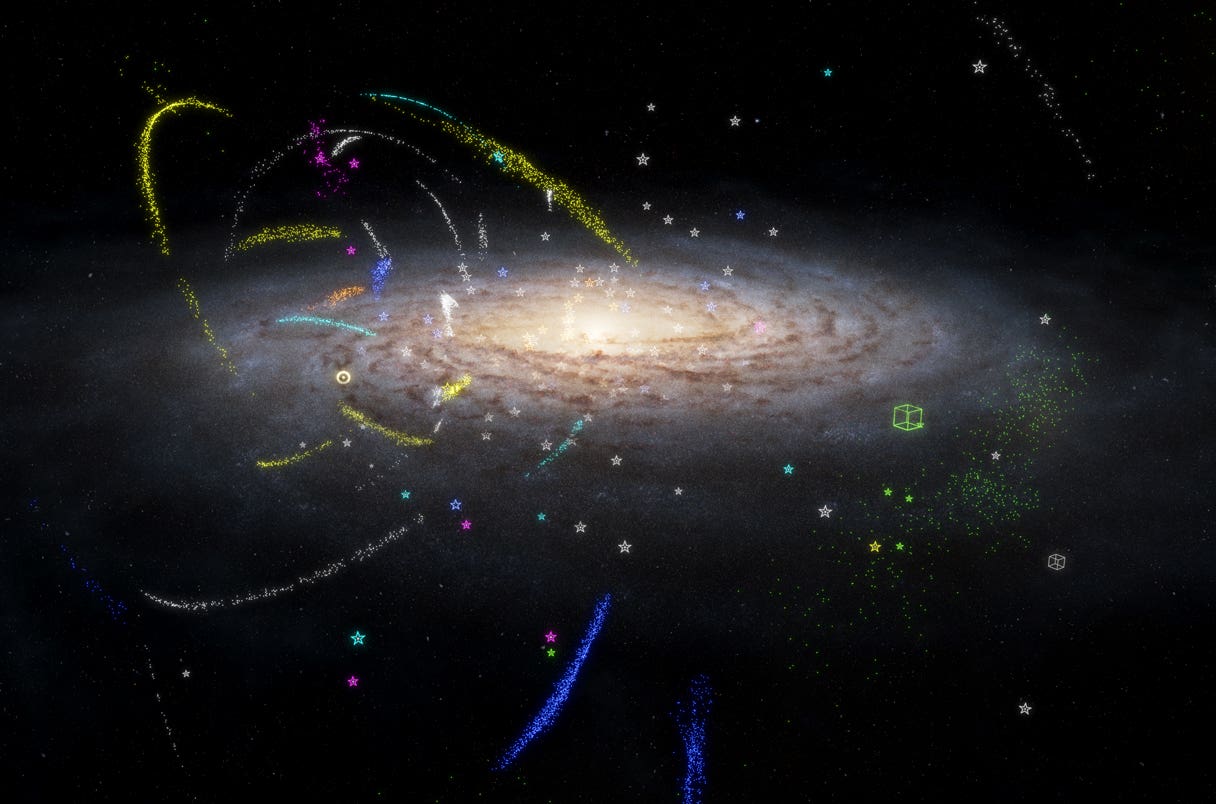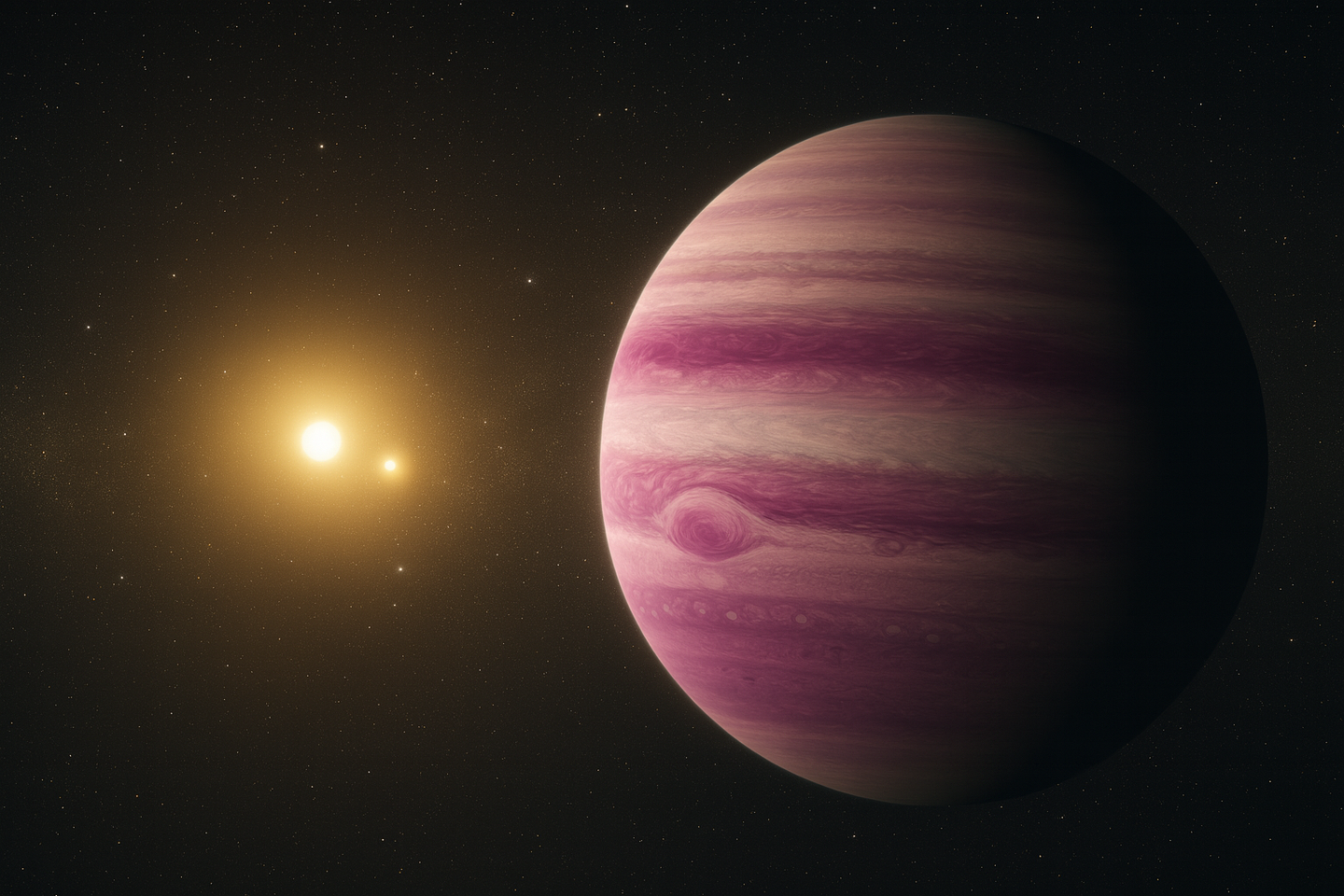The Milky Way has devoured at least six other galaxies, leaving ‘crumbs’ everywhere
Astronomers identified a number of stellar streams from past mergers years ago, and also used globular clusters to construct a timeline.

[Feb 26, 2022: Manish Saini]
Astronomers identified a number of stellar streams from past mergers years ago, and also used globular clusters to construct a timeline of the Milky Way’s past ‘feasts’. (CREDIT: Khyati Malhan)
Today, the Milky Way, the galaxy in which we dwell, appears to be a peaceful place, but don’t be fooled. The seeming tranquillity conceals a tumultuous past. Using data from the European Gaia space telescope, an international team of scientists has been able to discover the remains of half a dozen galaxies, all of which have been devoured by ours over the course of its 13,000 million-year lifespan. Five of the ‘victims’ had already been identified, but the sixth had remained unknown until now.
Like leftovers from an opulent banquet, remnants of the Milky Way’s past feasts are scattered everywhere in the galactic halo, an enormous spherical volume at the center of which is the galaxy’s characteristic spiral disk.
Researchers at the Max Planck Institute for Astronomy in Germany, led by Khyati Malhan, have created a map depicting the ‘crumbs’ of those ancient meals.
“The dynamical atlas of the Milky Way mergers that we present here provides a global view of the galaxy formation in action,” the researchers write in their study.
“Thus, our study contributes to the initial steps of unraveling the full hierarchical build-up of our galaxy, and also understanding the origin of the globular clusters and stellar streams of the Milky Way halo.”
Related News
When a smaller galaxy gets too close to a larger galaxy, in this case the Milky Way, its gravity pulls the visitor in and “stretches” it into an elongated chain of stars, a ‘stellar stream’ which ends up falling into the larger galaxy, leaving debris orbiting in its halo. The “food” leaves behind other crumbs, including smaller satellite galaxies that might have orbited the victim, or globular clusters, compact spheres made of thousands of stars tightly bound by their mutual gravity.
Astronomers identified a number of stellar streams from past mergers years ago, and also used globular clusters to construct a timeline of the Milky Way’s past ‘feasts’. Although doing so is not a quick or easy task, and often requires real detective work.
In the new study, researchers took the latest data from the Gaia satellite, which accurately records the locations of a billion stars and their paths, and then analyzed the motion of 170 globular clusters (marked with star symbols in the image) 41 stellar streams, and 46 satellite galaxies (shown as cubes).
Malhan and his team were able to link 62 of those objects to one of five known merger events (shown in different colors), and identified a new, previously unknown sixth.
A new map shows the distribution of the ‘crumbs’ of these huge galactic feasts. (CREDIT: Khyati Malhan)
The new ‘victim’ of our galaxy’s voracity has been named Pontus (in magenta in the image), thus joining the previous mergers with Gaia-Enceladus, Cetus, LMS-1/Wukong, (discovered in 2020), Sequoia, which merged with the Milky Way about 9 billion years ago, and the Sagittarius Dwarf Galaxy, which has repeatedly passed through the Milky Way over the past few billion years.
Interestingly, the system missed two other known merger events, including the one that took place 11 billion years ago with the Kraken galaxy and is considered the most significant of all known. The researchers believe that data could be hidden in some of the 195 objects that remain to be analyzed.
As for the newly discovered Pontus, the truth is that not much is known about it yet, although the stars that were part of it move very slowly and in the opposite direction to that of the rotation of the Milky Way. The researchers have also found evidence of other ‘hidden’ mergers, although it is too early to draw any conclusions.
The next step, explained in the research, will be to try to reconstruct a timeline of all the collisions and mergers suffered by our galaxy. The largest of which, by the way, is yet to come. It will be against our huge neighbor Andromeda and it will occur in 4.5 billion years. In that meeting, however, there will be no winners or losers and neither of the two galaxies will swallow the other. Instead, the two will merge into a single, huge new galaxy, now known to astronomers as Lactomeda.
For more science and technology news stories check out our New Discoveries section at The Brighter Side of News.
Note: Materials provided above by Manish Saini. Content may be edited for style and length.
Like these kind of feel good stories? Get the Brighter Side of News' newsletter.
Tags: #New_Discoveries, #Milky_Way, #Galaxies, #Stars, #Collisions, #Science, #Cosmology, #Astronomy, #Research, #The_Brighter_Side_of_News



